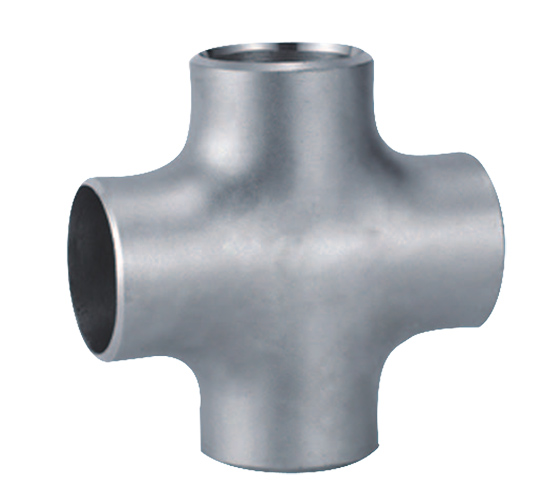-
Cangzhou Yulong Steel Co., Ltd.
-
Phone:
+86 13303177267 -
Email:
admin@ylsteelfittings.com
- English
- Arabic
- Italian
- Spanish
- Portuguese
- German
- kazakh
- Persian
- Greek
- French
- Russian
- Polish
- Thai
- Indonesian
- Vietnamese
- Zulu
- Korean
- Uzbek
- Hindi
- Serbian
- Malay
- Ukrainian
- Gujarati
- Haitian Creole
- hausa
- hawaiian
- Hebrew
- Miao
- Hungarian
- Icelandic
- igbo
- irish
- Japanese
- Javanese
- Kannada
- Khmer
- Rwandese
- Afrikaans
- Albanian
- Amharic
- Armenian
- Azerbaijani
- Basque
- Belarusian
- Bengali
- Bosnian
- Bulgarian
- Catalan
- Cebuano
- China
- China (Taiwan)
- Corsican
- Croatian
- Czech
- Danish
- Esperanto
- Estonian
- Finnish
- Frisian
- Galician
- Georgian
- Kurdish
- Kyrgyz
- Lao
- Latin
- Latvian
- Lithuanian
- Luxembourgish
- Macedonian
- Malgashi
- Malayalam
- Maltese
- Maori
- Marathi
- Mongolian
- Myanmar
- Nepali
- Norwegian
- Norwegian
- Occitan
- Pashto
- Dutch
- Punjabi
- Romanian
- Samoan
- Scottish Gaelic
- Sesotho
- Shona
- Sindhi
- Sinhala
- Slovak
- Slovenian
- Somali
- Sundanese
- Swahili
- Swedish
- Tagalog
- Tajik
- Tamil
- Tatar
- Telugu
- Turkish
- Turkmen
- Urdu
- Uighur
- Welsh
- Bantu
- Yiddish
- Yoruba

Nov . 26, 2024 01:31 Back to list
Understanding ASTM A106 Grade B Steel Specifications and Applications for High-Temperature Services
Understanding ASTM A106 Grade B Pipe Standards and Applications
ASTM A106 Grade B is a standard specification for seamless carbon steel pipes that are intended for high-temperature service. This specification is important for industries that utilize high-pressure systems, where strength and durability are required. Understanding its specifications, mechanical properties, and applications can aid engineers and procurement professionals in selecting the right materials for their projects.
Overview of ASTM A106 Standard
The ASTM A106 standard covers seamless carbon steel pipes for high-temperature service in the petroleum industry and various other high-temperature applications. It specifies the chemical composition, mechanical properties, and manufacturing processes for pipes, ensuring they can withstand demanding conditions. The standard is divided into three grades A, B, and C, with Grade B being the most commonly used due to its balance of strength and weldability.
Chemical Composition
According to ASTM A106, the chemical composition of Grade B pipes must include a maximum of 0.30% carbon, 0.60% manganese, 0.035% phosphorus, and 0.035% sulfur. These specifications ensure the pipes possess the necessary mechanical strength while being weldable. The presence of manganese enhances the toughness of the steel, making it ideal for high-temperature applications. Additionally, the low phosphorus and sulfur content helps to improve the overall ductility and reduces the risk of cracking during welding.
Mechanical Properties
The mechanical properties of ASTM A106 Grade B are critical for its application in high-pressure and high-temperature systems. The pipe must have a minimum yield strength of 35,000 psi (241 MPa) and a minimum tensile strength of 60,000 psi (414 MPa). Furthermore, the elongation percentage for a two-inch length must be a minimum of 20%, indicating good ductility, which is essential for forming and welding applications.
The toughness of ASTM A106 Grade B is further supported by its ability to maintain these mechanical properties at elevated temperatures, making it suitable for various services involving steam and heat transfer. It is often used in power generation, chemical manufacturing, and oil and gas exploration.
Manufacturing Process
astm a a106 gr b standard

Pipes conforming to ASTM A106 Grade B are manufactured using a seamless process, generally involving the extrusion or piercing of a solid steel billet. This production technique ensures uniform wall thickness and seamless construction, which are vital for preventing leaks in high-pressure applications. The pipes are then subjected to a range of tests as outlined in the ASTM A106 standard, including hydrostatic testing, to ensure their integrity and strength.
Applications
The versatility of ASTM A106 Grade B pipes makes them suitable for a wide range of applications. They are commonly used in industries such as oil and gas, power generation, construction, and manufacturing. Specifically, these pipes are ideal for
1. High-Temperature Industrial Applications They are used in piping systems that transport fluids at high temperatures and pressures, such as in power plants and oil refineries.
2. Heat Exchangers The good thermal conductivity, combined with the ability to withstand high temperatures, makes these pipes perfect for use in heat exchangers.
3. Petrochemical Industry ASTM A106 Grade B pipes are extensively used in the transportation of oil, natural gas, and various petrochemicals due to their strength and corrosion resistance.
4. Boilers and Pressure Vessels They are also employed in the fabrication of boilers and pressure vessels, where high strength and durability under pressure are crucial.
Conclusion
In summary, ASTM A106 Grade B pipes are an essential component in many industrial applications requiring high strength and resistance to high temperatures. By understanding the specifications outlined in the ASTM A106 standard, engineers and procurement professionals can make informed decisions about material selection, ensuring safety and efficiency in their operations. As industries continue to evolve, the demand for high-quality carbon steel pipes such as ASTM A106 Grade B will remain critical for meeting these demanding challenges.
Latest news
-
ANSI 150P SS304 SO FLANGE
NewsFeb.14,2025
-
ASTM A333GR6 STEEL PIPE
NewsJan.20,2025
-
ANSI B16.5 WELDING NECK FLANGE
NewsJan.15,2026
-
ANSI B16.5 SLIP-ON FLANGE
NewsApr.19,2024
-
SABS 1123 FLANGE
NewsJan.15,2025
-
DIN86044 PLATE FLANGE
NewsApr.19,2024
-
DIN2527 BLIND FLANGE
NewsApr.12,2024
-
JIS B2311 Butt-Welding Fittings LR/SR 45°/90° /180°Seamless/Weld
NewsApr.23,2024











